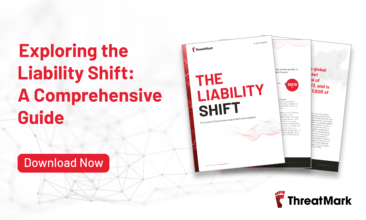
Who Carries the Cost of Fraud? The Changing Landscape of Fraud Liability
As the payment services industry evolves, it faces critical challenges.
One of the most imminent is the continuous fight against digital fraud and – inevitably – the damage it causes to financial institutions, their customers, and the overall trust in the digital payments ecosystem. In this context, we are witnessing a fundamental change in the liability landscape.
Post-COVID changes in consumer behavior, the popularity and ease of electronic payments, the adoption of instant payment systems and open banking frameworks, and new fintech players – all these are the factors leading to unprecedented growth of the electronic payment industry. Current data from Capgemini and GlobalData shows that by 2030, the global cashless market will experience a CAGR of 14–15%.
However, the more money we put into the cashless world, the bigger the appetite of fraudsters. The prevalence of payment fraud is increasing globally: In 2022, the fraud and scam losses reached $8.8 billion in the US, £1.2 billion in the UK, and $3.1 billion in Australia. And the list goes on.
Fraudsters use advanced tactics, such as social engineering, and take advantage of modern payment methods, such as real-time payments. Euro Retails Payment Board (ERPB) findings assert that the scale of fraud cases and loss is likely to grow over the coming years due to professionalized crime, the modernization of fraud techniques (i.e. use of AI), continued digitization of society, and the rise of real-time payments.
As a result, APP fraud – a type of fraud where individuals are deceived into authorizing the transfer of funds from their account to a scammer’s account – is becoming increasingly common. In the UK alone, Faster Payments (a service facilitating real-time payments) were used for 98% of APP fraud payments. GlobalData and ACI Worldwide predict that growth in APP fraud losses will increase with a record CAGR of 21% in the United Kingdom, India, and the United States by 2026.
Fraud Liability – An Array of Approaches
This brings us to the headline question: Who carries the – increasingly higher – cost of fraud? Today, the answer varies across regions, countries, and even banks and payment service providers (PSPs) as each jurisdiction or organization may have its regulations and guidelines addressing consumer protection, financial transactions, and fraud liability. In the UK, for example, the percentage of refunded losses from APP fraud (by volume) ranges from 6% to 94% across individual financial institutions. As for the value, the percentage of total APP fraud losses that were reimbursed to customers ranges between 10–91%.
Inconsistencies in liability regulations are becoming a thing of the past, as several countries prepare to overhaul their fraud loss liability standards. Leading the charge is the UK’s Payment Systems Regulator (PSR), which is set to implement new guidelines on October 7, 2024. These changes will hold both sending and receiving banks equally responsible for reimbursing customers in cases of fraudulent transactions and will establish consistent minimum standards for customer protection. For instance, the maximum reimbursement per claim will be capped at £415,000, with a maximum claim excess of £100. Additionally, vulnerable customers will receive enhanced protection, and clearer guidelines will determine situations in which a customer is deemed not to have taken sufficient care, with the onus on the bank to prove gross negligence.
The UK, however, is not alone in this endeavor – other countries are closely monitoring the situation. Greece, Norway, and Sweden are among those that are preparing to implement new measures to shift liability for fraud. Additionally, the European Union has announced plans for a new Payment Service Directive (PSD3) and Payment Service Regulation (PSR1), which will also prioritize better protection for fraud victims and the allocation of a greater share of fraud liability to financial institutions.
Stay Informed with Our Upcoming Whitepaper on Fraud Liability
Changes in liability are already underway and soon we are likely to see more countries, regulators, and organizations implement new standards, shifting the cost of fraud from customers to the financial institutions that send and receive the funds.
Is this a good thing? What does it imply for banks and payment service providers? What will need to be done to fight fraud more effectively? And are there any ways to prevent social engineering and APP fraud, i.e. a scam where the transaction is made by the – albeit defrauded – customer themselves? Stay tuned and find the answers in our upcoming whitepaper.


